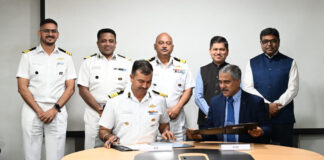A Life of Energy and Family Devotion
Table of Contents
Lord Louis Mountbatten, Britain’s last Viceroy of India, never imagined that age or ill health would slow him down. Even past 70, he enjoyed an active life, rarely troubled by more than a common cold. Whenever he was at Broadlands, his country estate, he maintained a strict morning routine of two hours of horse riding.
Although he had given up his beloved sport of polo in his later years, Mountbatten’s zest for life remained undiminished. Family was central to his existence—Christmas gatherings at Broadlands and Easter reunions at Brabourne were traditions he never missed. Summers were often spent at Classiebawn Castle in Ireland.
According to biographer Brian Hoey in Mountbatten: The Private Story, Mountbatten took a lively interest in his grandchildren’s lives, even their friendships and love affairs. His playful nature made him a favourite among younger family members. Grandson Michael John recalled how Mountbatten laughed heartily at Charlie Chaplin and Laurel and Hardy films, even after repeated viewings.
Mountbatten on the IRA Hit List
By the early 1970s, British authorities suspected that Mountbatten could become a target for the Irish Republican Army (IRA). In 1971, twelve police officers were assigned to his protection. He admitted to his official biographer, Philip Ziegler, that the government feared an IRA kidnapping to exchange for imprisoned militants.
Andrew Lownie, in The Mountbattens: Their Lives and Loves, revealed that documents seized during a raid on an IRA safe house included Mountbatten’s name among 50 assassination targets. In 1976, a sniper attempt on him failed due to rough seas preventing a clear shot.
Rising Threats and Ignored Warnings
In 1979, the IRA assassinated Britain’s ambassador to the Netherlands, Sir Richard Sykes, and attempted to kill NATO chief General Alexander Haig. That June, British police warned Mountbatten against travelling to Ireland. His response was simple: “The Irish people are my friends.”

Security assessments flagged his boat, Shadow V, as vulnerable—anyone could slip aboard at night. Suspicious vehicles had been spotted near his mooring, but these warnings went largely unheeded.
The Morning of the Attack
August 27, 1979, was a public holiday in Britain. After days of rain, the sun returned, and Mountbatten invited family members to join him for a boat trip on Shadow V. A security officer prone to seasickness was excused from boarding—a decision that left the vessel without direct armed protection.

Wearing a jersey from his wartime ship HMS Kelly, Mountbatten took the helm. Beneath the deck lay a hidden device—approximately 20 kilograms of plastic explosives planted by IRA operatives.
Eyes on the Target
As the boat departed around 11:30 a.m., a shore-based security team followed in a car, observing through binoculars. Unbeknownst to them, IRA members were also watching closely, ready to detonate the device remotely.
Brian Hoey described the scene: Mountbatten was steering, three young people sat mid-deck, and an elderly woman was aboard. At exactly 11:45 a.m., the trigger was pressed.
The Deadly Explosion
The blast ripped Shadow V apart, hurling debris and passengers into the water. Mountbatten’s daughter Patricia, momentarily looking down at a magazine, avoided severe eye injury but was thrown into the sea.
Lord Brabourne, Mountbatten’s son-in-law, had been standing mid-deck when the explosion struck. Moments earlier, he had asked, “Are you enjoying yourself?”—words that may have been the last Mountbatten heard.
Within seconds, the vessel was destroyed. Rescue efforts began immediately as locals and nearby boats rushed to pull survivors from the water.
The Aftermath
Mountbatten’s body was recovered a short distance from the wreckage. His legs were almost severed, and his clothes shredded, except for the intact HMS Kelly jersey. Dr. Richard Wallace, who happened to be nearby, recalled the chaotic rescue: survivors were prioritised over the dead, makeshift stretchers were built from broken doors, and torn sheets became bandages.
Though his face remained largely intact, Mountbatten had suffered fatal injuries. His death was instantaneous.
Global Shock and State Mourning
News of the assassination prompted immediate reactions across the Commonwealth. In India, where Mountbatten had played a pivotal historical role, government offices and businesses closed, and a seven-day state mourning was declared.
Biographer Richard Hough noted the eerie coincidence that both Mountbatten and his friend Mahatma Gandhi were assassinated in politically turbulent countries at the age of 79.
On September 5, 1979, a funeral service was held at Westminster Abbey, attended by Queen Elizabeth II, Prince Charles, Prime Minister Margaret Thatcher, European royalty, and over 1,400 mourners.
IRA Claims Responsibility
Soon after the attack, the Provisional IRA issued a statement claiming responsibility, framing the killing as a political act to draw attention to “Britain’s ongoing occupation” of Northern Ireland. They warned that the British ruling class would pay a “heavy price” for the conflict.
The statement, however, failed to justify the killing of a 79-year-old man alongside members of his family. Public support for the IRA’s campaign waned following the attack.
Political Fallout
Prime Minister Margaret Thatcher took a hard line in response, stripping IRA fighters of prisoner-of-war status and officially designating the group as a criminal organisation rather than a political one.
Mountbatten’s assassination, coupled with the killing of 18 British soldiers in Northern Ireland that same day, marked one of the bloodiest episodes of the Troubles. It underscored the IRA’s ability to strike high-profile targets but also hardened political opposition to their cause.
Lord Mountbatten assassination, IRA plot, Classiebawn Castle bombing, Shadow V boat explosion, Troubles in Northern Ireland, Margaret Thatcher IRA policy, British royal family tragedy, 1979 IRA attack.










